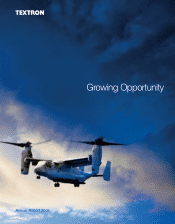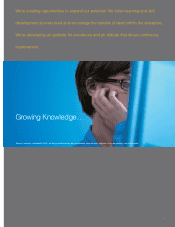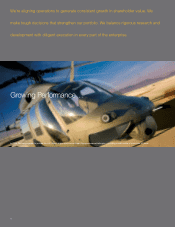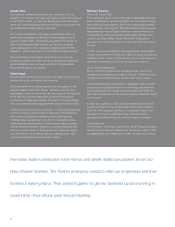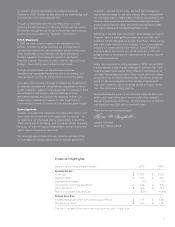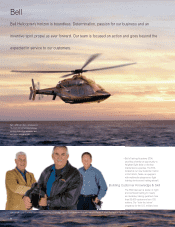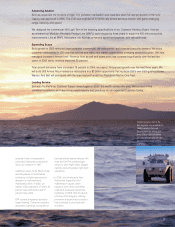E-Z-GO 2005 Annual Report Download - page 11
Download and view the complete annual report
Please find page 11 of the 2005 E-Z-GO annual report below. You can navigate through the pages in the report by either clicking on the pages listed below, or by using the keyword search tool below to find specific information within the annual report.
educated tens of thousands of
pilots and maintenance personnel
since our inception in 1947.
Customers return to the BTA to study
aircraft systems, to demonstrate
proficiency in flight maneuvers for
ratings or to learn technical
maintenance skills. In 2005, we
trained 3,255 customers, of whom 33
percent were technicians and 67
percent were pilots.
BTA courses emphasize scenario-
based training. Customers practice
autorotation landings to prepare for
perilous aircraft system failures. We
were the first FAA certified flight
school to offer Night Vision Goggle
training, promoting safer night-flight
operations.
In 2005, we introduced a Non-
Destructive Inspection field
maintenance course, which
supports lower direct operating
costs and increased operational
readiness. In 2006, Bell will launch
a Premier Pilot Program, offering
preventive education about factors
that contribute to accidents and
incidents.
9
Advancing Aviation
Bell has expanded the frontiers of flight. Our persistent dedication was rewarded when full rate production of the V-22
Osprey was approved in 2005. The V-22 was engineered to further any armed services mission with game-changing
range, flexibility and speed.
We designed the commercial 429 Light Twin to the exacting specifications of our Customer Advisory Board. And we
accelerated our Modular Affordable Product Line (MAPL) technologies by three years to equip the 429 with productivity
improvements. Like all MAPL helicopters, the 429 has enhanced speed and payload, with reduced noise.
Expanding Scope
Bell’s growth in 2005 reflected unprecedented commercial, law enforcement and homeland security demand. We enjoy
customer relationships in 130 countries and we see many new market opportunities emerging around the globe. Bell has
managed increased demand well. Revenue from aircraft and spare parts has increased significantly over the last two
years; in 2005 alone, revenue improved 35 percent.
Total aircraft deliveries have increased 18 percent in 2005; we expect 104 percent growth over the next three years. We
will build 368 Armed Reconnaissance Helicopters in a $3 billion opportunity that replaces Bell’s own distinguished Kiowa
Warrior. And Bell will participate with the team that will furnish the President’s Marine One Fleet.
Leading Service
Bell won Pro Pilot’s top Customer Support award again in 2005 – the twelfth consecutive year. We’re proud of this
consistent excellence and have incorporated industry best practices into an expanded Customer Center.
Textron Systems, part of the
Bell segment, won a contract in
2005 to produce Armored
Security Vehicles for the U.S.
Army. These highly protected
armored vehicles have proven
successful in various combat
scenarios.
•

